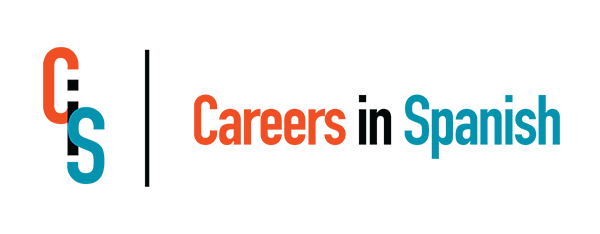This blog post focuses on how to use strong verbs in your résumé. You can read about the three most common résumé formats in the post entitled Three Amigos: The Most Common Résumé Formats and about the sections of a résumé in the post entitled How to Write a Résumé.
To stand out among other candidates by highlighting your accomplishments, you need to use strong verbs in your résumé. By definition, a “verb” is a word used to describe an action, state, or occurrence. You need verbs that show what you did, how you did it, and the results.
Reframing the “Responsible for”
In the past, it was more common to use the phrase “responsible for.” The phrase is less preferred now. It does not show agency on your part or, at least, it gives the impression that someone gave you responsibility and you were not necessarily proactive. Moreover, you can indicate that you are responsible for something, but communicate little with the reader about how you carry that responsibility. To connect the outcome to you, use verbs that demonstrate what you did.
In Modernize Your Résumé. Get Noticed...Get Hired, Wendy Enelow and Louise Kursmak argue that “verbs convey action and energy—you did something! You will increase the vigor of your entire resume by starting each paragraph and each bullet point with a strong verb—even if that paragraph or bullet point is not linked to a quantified achievement” (35).
Although you can increase the vigor of your entire résumé, using strong verbs in the “Summary of Qualifications,” “Job Descriptions,” and the “CAR Stories” is essential. These are the perfect places to market yourself, add keywords, and highlight your contributions.
Summary of Qualifications
In the “Summary of Qualifications” section, you can use two or three verbs that give an idea of what you do. Usually, this section is filled with adjectives and keywords; you can be creative and add some verbs to make it stronger.
Wendy Enelow and Louise Kursmak provide an excellent example of an accounting graduate: “High-performing accounting graduate, prepared to assume roles as Associate or Staff Accountant. Energetic professional with a tireless work ethic and determination to excel. Quick to step up and take on leadership roles. Mesh easily with diversified teams to support and emphasize problem solving and project excellence” (7). You can use verbs like “collaborated,” “designed,” or “researched.”
Spend some time exploring the work you have done in courses and jobs.
Job Description
In the “Job Description” section, you can easily explain what your duties were. Keep in mind that a job description is a brief explanation of one or two lines after you state the company and the title of a previous position. These descriptions are optional but should be included when the reader might not be familiar with the job or if you want to add more keywords to your résumé.
For example, if you are a Teaching Assistant, you can write: “Recruited to teach beginning-level Spanish to undergraduate students and grade assignments, design lesson plans, and assist students in different aspects of their language learning.”
Again, spend some time exploring the work you have done in courses and jobs.
CAR Stories
CAR Stories are information presented in the “Professional Experience” section to highlight outcomes; they present a Challenge, an Action, and a Result. Usually, these stories appear in a series of three or bullet points to facilitate reading.
In the same example provided by Wendy Enelow and Louise Kursmak, they decided to highlight projects that the student completed and that can be useful to show that he/she/they can get the job done. Here is an example of two bullet points:
“Produced 120-page business plan, including new mission statement, short- and long-term goals, and marketing and human resources plans” (7).
“Analyzed revenues and expenses, reviewed financial breakdowns, and proposed new financial processes and procedures” (7).
Again, spend some time exploring the work you have done in courses and jobs.
How Can You Approach Strong Verbs in a Résumé
First, try to use a variety of strong verbs to avoid repetition. Wendy Enelow and Louise Kursmak include a list of 403 résumé verbs that they entitled “Verbs with Verbs.” This is a good place to begin. You can also find a list of verbs in dictionaries, websites, and other publications. Some of these verbs are:
- Acquire
- Accelerate
- Budget
- Built
- Collaborate
- Complete
- Corroborate
- Design
- Double
- Empower
- Enhance
- Facilitate
- Finalize
- Gain
- Generate
- Handle
- Head
- Implement
- Initiate
- Launch
- Lead
- Maximize
- Negotiate
- Obtain
- Optimize
- Process
- Produce
- Quantify
- Redesign
- Reduce
- Solidify
- Strengthen
- Supervise
Second, highlight with colors the verbs that you use in your résumé. This practice helps you to (a) review the verbs included in the résumé and verify if there is repetition, and (b) identify parts in the résumé that need more strong verbs.
Some Considerations...
If you do not have experience writing résumés, it is highly recommended that you hire a professional or certified résumé writer who can help you translate your achievements into an effective job application. The money will be well spent even if it is more expensive than buying a book.
In the end, what you are paying is to learn how to brand yourself and develop the mindset of a professional willing to invest in a career. In other words, you pay for the résumé and, at the same time, you pay for acquiring a new skill and a new way to define success.
Do you have a draft of your résumé? What information did you include? How did you frame your accomplishments?
Disclosure: This blog post includes a link as part of the Amazon Affiliate Program. As an Amazon Associate I earn a commission from qualifying purchases.
